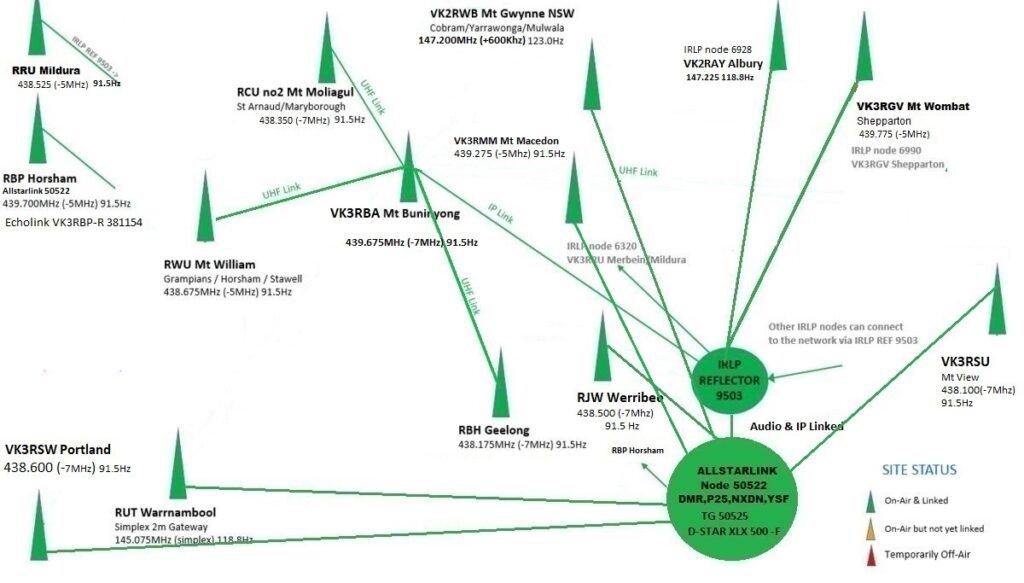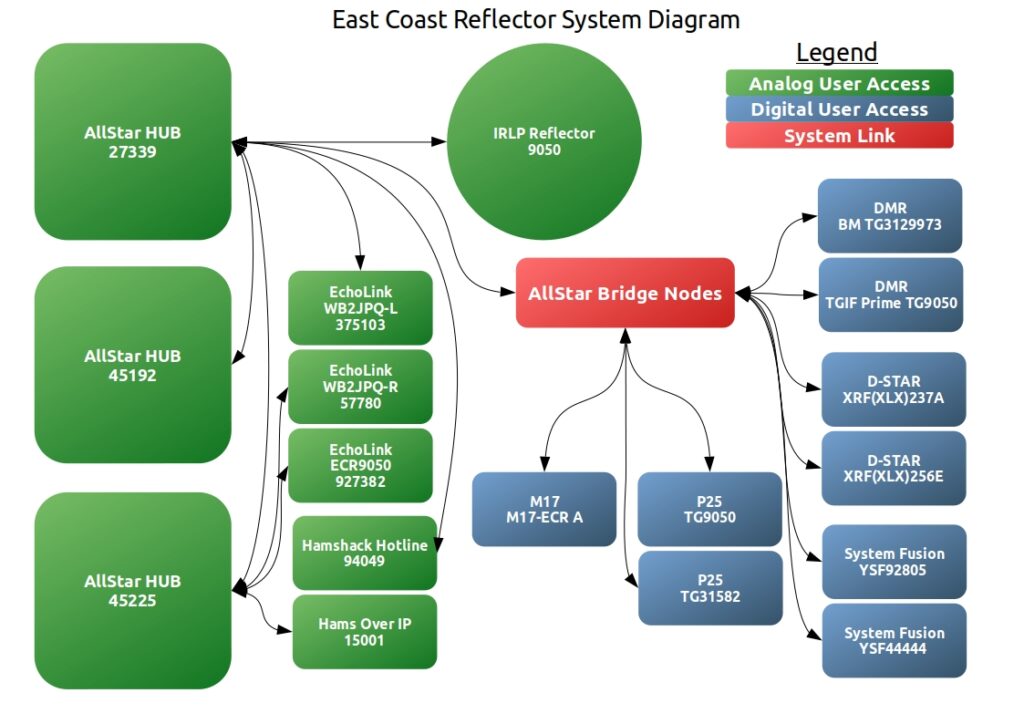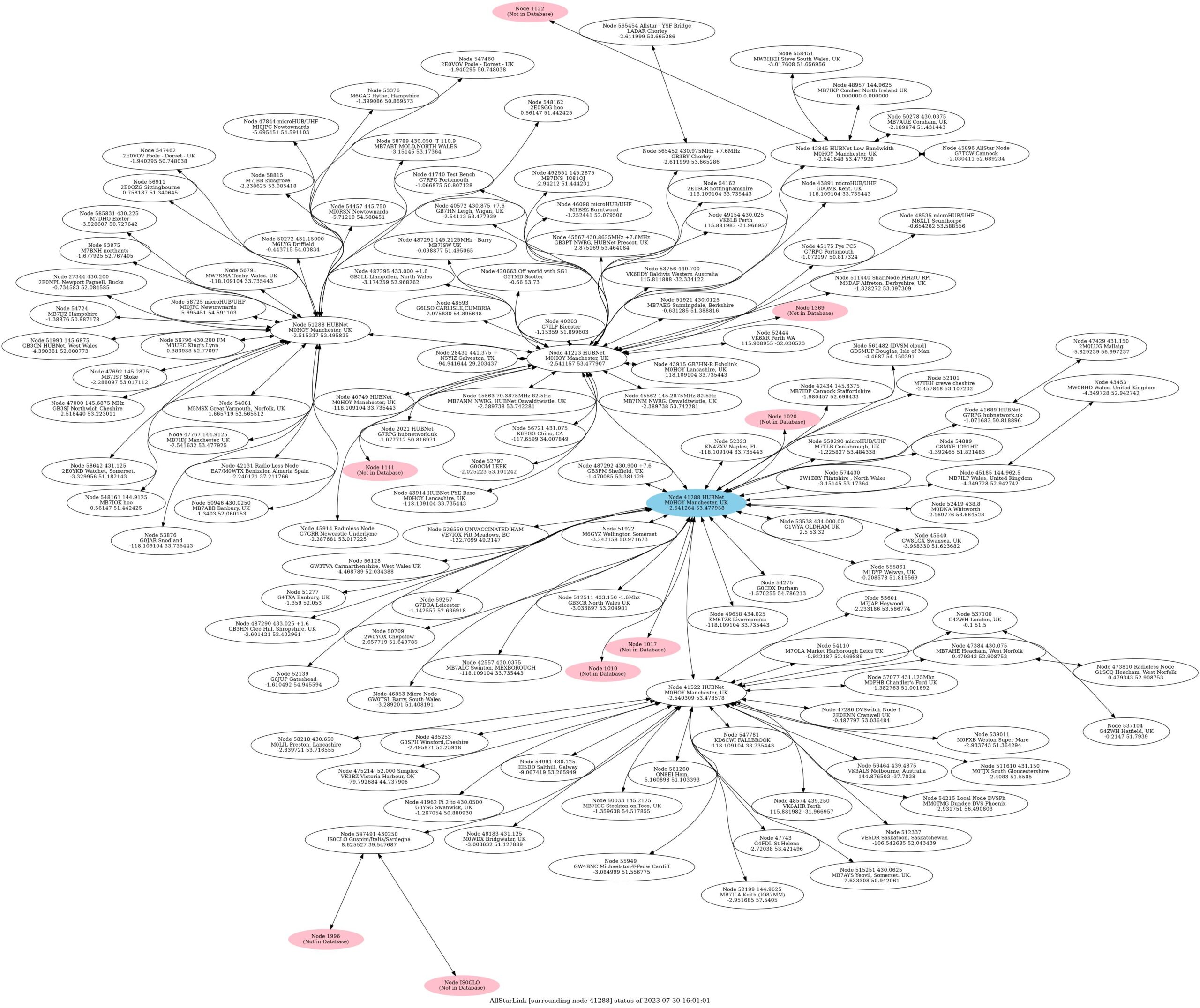AllStarLink is a network of Amateur Radio repeaters, remote base stations and home nodes accessible to each other via Voice over Internet Protocol (VoIP). AllStarLink can run on a dedicated computer (including the Raspberry Pi) that you host at your home or repeater site. It is based on the open source Asterisk PBX running the app_rpt application. App_rpt makes Asterisk a powerful system capable of controlling one or more radios. It provides linking of these radio “nodes” to other systems of similar construction anywhere in the world via VoIP.
AllStar is a busy network used worldwide. Many older 2m/70cm repeaters across the world are now connected to AllStar meaning that if you have a node you can connect to them.
The great thing about having an AllStar node at your QTH is it is an FM node, so you don’t need a digital radio to access it. In fact you most likely already have a radio that you can use.
Any FM radio with CTCSS that operates in the ham bands can access your node or an AllStar enabled repeater.
Audio quality is generally extremely good because it’s FM so it doesn’t sound “digitised” like other digital voice modes.
An AllStar RF Node such as the DuraNode is similar to the traditional “hotspot” in that it runs on a Raspberry Pi with an RF hat, and is connected to the AllStarlink network via the internet. The only difference is that the hat uses an FM radio chip, hence no need for a digital radio.
Avoid Rubbish Hardware:
Amazon, EBay and Ali Express is full of rubbish quality AllStar hardware. Many are clones of the original USA made “Shari”. These poor quality clones are a missing key components and are typically noisy on the audio TX. As these arrive untested you could be the recipient of a node that is DOA. Be especially careful as many are running the Chinese knock-off radio module called the SR110 – these can be difficult to program.

There are many repeater networks connected to each other using AllStar.
The VK3RBA Hub is a fine example of this.
VK Repeater Linked System – the information below is copied from the VK3RBA QRZ page:
VK3RBA70 FM 439.675MHz (-7MHz offset) 91.5Hz Site: Mt Buninyong (Ballarat)
VK3RSU70 FM 438.100MHz (-7MHz offset) 91.5Hz Site: Mt View (Glen Waverley)
VK3RWU70 FM 438.675MHz (5-MHz offset) 91.5Hz Site: Mt William (Grampians)
VK3RCU70 FM 438.350MHz (-7MHz offset) 91.5Hz Site: Mt Moliagul (Maryborough)
VK3RBH70 FM 438.175MHz (-7MHz offset) 91.5Hz Site: Geelong
VK3RUT2 FM 145.075MHz (Simplex Gateway) 118.8Hz Site: Warrnambool
VK3RGV70 FM 439.775MHz (-5MHz offset) 123.0 Site: Mt Wombat (Shepparton)
VK3RRU70 FM 438.525MHz (-5MHz offset) 91.5Hz Site: Merbein (Mildura)
VK3RBP70 FM 439.700MHz (-5MHz offset) 91.5Hz Site: Horsham
VK2RAY2 FM 147.225MHz (+600Khz) 118.8Hz Site: Albury NSW
VK2RWB70 FM 147.200MHz (+600Khz) 123.0Hz Site: Mt Gwynne NSW (Yarrawonga)
VK3RJW70 FM 438.500MHz (-7MHz offset) 91.5Hz Site: Werribee
VK3RSW70 FM 438.600MHz (-7MHz offset) 91.5Hz Site: Portland
VK3RMM70 FM 439.275MHz (-5MHz offset) 91.5Hz Site: Mt Macedon
VK3RBO 438.025 MHz (-5MHz offset) 91.5 Hz Site: Bendigo Use IRLP DTMF 9503
VK3RBU 438.475 MHz (-7MHz offset) 91.5 Hz Site: Mt Hollowback (Creswick & North) Use Allstar DTMF *88#

There’s a great new hub in Australia called Vk-OzHUB.
There are also many international Hubs. These are mostly large interconnected networks.
Hubnet UK:
Click here to view their website.
Founded in May 2016 by Steve M0HOY with the mandate of increasing radio activity through coordinating the linking of Repeaters and Simplex Gateways across the UK that in recent years had fallen into disuse.
Heading into its 6th year in May 2023, HUBNet has pushed the boundaries of multimode Amateur Radio communications; with a great deal of work by Peter G7RPG and the support of many others, HUBNet has rapidly become the largest multimode AllStar communications platform based in the UK.
The East Coast Reflector network is another example.
Click here to view their website.


